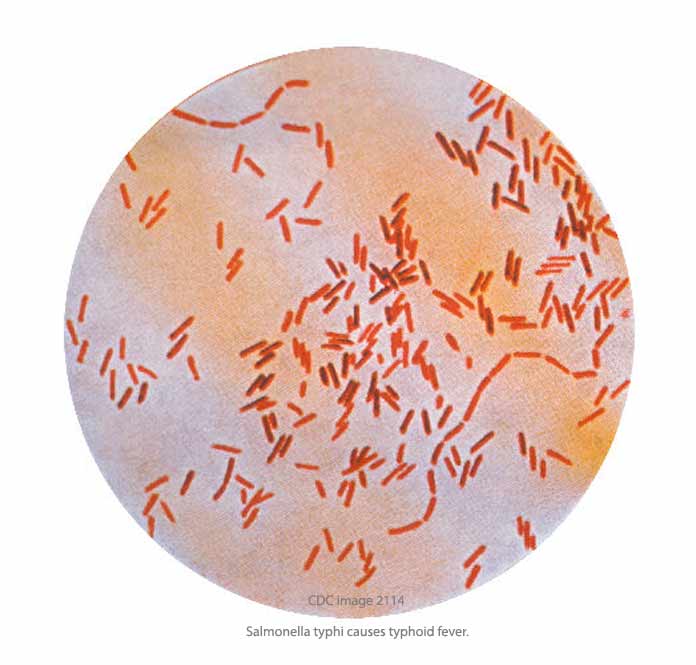Can I Sue for Typhoid Fever from Food Poisoning with Salmonella Typhi?
Yes, if the case of typhoid fever can be linked to a restaurant, retailer or food company. Salmonella Typhi victims may be able to receive compensation for the following:
- Medical bills
- Lost wages
- Pain and suffering
- Disability
- Loss of quality of life
- Other damage

The bacterium Salmonella Typhi causes typhoid fever, a life-threatening illness that causes:
- Sustained fever
- Headache
- Malaise
- Anorexia
- Relative bradycardia (slow heart rate)
- Constipation or diarrhea
- Nonproductive cough
Symptoms of typhoid fever can occur within three days up to three months after consumption of contaminated food or water, usually in one to three weeks
There are about 400 cases of typhoid fever each year in the United States. Approximately 75% of those cases are related to international travel. You can get typhoid fever by eating or drinking products that have been contaminated by a person who is “shedding” Salmonella Typhi in their stools. It can also occur if sewage contaminated with S. Typhi gets into the drinking water.
Persons with typhoid fever carry the bacteria in their bloodstream and intestinal tract. Some carriers may recover from typhoid fever but continue to carry the bacteria. Salmonella Typhi is shed and can be spread by both actively ill persons and latent carriers.
Our lawyers have successfully negotiated with restaurants, food manufacturers and insurance companies to obtain full and adequate compensation for our clients. Contact us for a free consultation. Food poisoning is preventable, and those responsible for making you sick should be held accountable.
Symptoms and Complications
The first symptom is usually a high, sustained fever. The fever may be as high as 103° to 104° F (39° to 40° C) and may be accompanied by stomach pains, headache, weakness or loss of appetite. In some cases, patients have a rash of flat, light red spots. The only way to confirm a S. Typhi infection and Typhoid fever is to have samples of stool or blood tested for the presence of S. Typhi.
Once S. Typhi bacteria are consumed, they multiply and spread into the bloodstream. The severity of the the illness depends on the extent of contamination, the patient’s age and how quickly treatment is started.
You can click here now to contact our lawyers and get your free case review. We are a national law firm and represent clients throughout the United States.